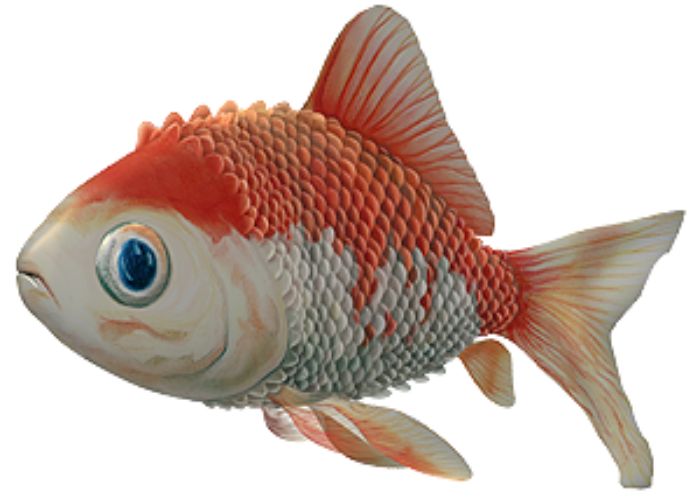Table of Contents
I. Common Fish Diseases
Ichthyophthirius multifiliis (Ich or White Spot Disease):
- Symptoms: grain-like cysts on their fins, gills, and skin, and their swimming habits may change dramatically. Ichthyophthirius multifiliis, often known as White Spot Disease, is the name given to this illness.
- : : Parasites of protozoan fish.
- Treatment: Formalin or copper-based medications can be used to increase the water temperature and speed up the parasite’s life cycle. Stop the spread of disease by isolating sick fish.
Fin Rot:
- Symptoms: Fin rot manifests itself visually as a torn or corroded fin with discoloured or frayed edges.
- Causes: brought on by things like physical damage or polluted water, is the main reason.
- Treatment: administering broad-spectrum antibiotics, and generally improving the water conditions are all possible treatments.
Columnaris Disease (Mouth Fungus or Cotton Wool Disease):
- Symptoms: alternatively called cotton wool disease or mouth fungus. Is characterised by white, cotton-like growths on the skin, gills, and mouth. Also evident are symptoms of lethargy and loss of appetite.
- Causes: The bacterium Flavobacterium columnare is the root cause.
- Treatment: Medications such as tetracycline are administered while sick fish are isolated and the water is kept clean.
Dropsy:
- Symptoms: prominent scales, and generalised weakness are all signs of dropsy.
- Causes: The underlying reason is bacterial infections that affect the internal organs, especially the kidneys.
- Treatment: The sick fish is treated by isolating it in a controlled environment. Giving it antibiotics like kanamycin or erythromycin, and giving it supportive care.
Velvet Disease (Oodinium):
- Symptoms: more often known as Velvet Disease, causes itching, rapid gill movement, and tiny, dust-like patches on the skin that can be yellow or brownish-gold in colour.
- Causes: Protozoan fish parasites.
- Treatment: increasing the water temperature, and administering copper-containing medications are all viable therapy options. Properly sanitise and keep water clean.
II. Prevention Strategies
Maintain Optimal Water Condition
Water pH, ammonia, nitrite, and nitrate levels should be monitored often.
Regularly checking the filter and replacing the water will keep things stable and clean.
Quarantine New Fish:
It is suggested that any newly added fish or aquatic organisms be kept in a quarantine tank for at least two weeks to ensure their health.
Provide a Balanced Diet:
Keep problems with water quality at bay by feeding a diet that is appropriate for the species and contains a healthy balance of nutrients without overfeeding.
Avoid Stress:
It is basic to diminish the possibilities of stress causes including threatening tank mates, packing, and abrupt changes in water conditions.
Regular Health Checks:
Look out for any progressions in your fish’s way of behaving or shading, as well as some other signs. To have an effective treatment, early finding is pivotal.
III. Treatment Protocols
Medication Dosage and Duration:
Try not to quit taking your remedy until the producer says to do as such, whether or not your side effects improve while you are getting treatment.
Isolation and Quarantine:
In order to prevent the infection from spreading, it is essential to isolate sick fish in a quarantine tank.
Temperature Adjustments:
Some parasitic diseases, like Ich, are more curable when water temperatures are raised since.This kills parasites and speeds up their life cycle.
Salt Baths:
In certain cases, a salt bath can be used as an additional treatment for bacterial diseases and external parasites. Follow the recommended salt concentrations and time intervals to the letter.
Consulting a Veterinarian:
If the infection is severe or persists for a long time, it’s best to consult a veterinarian who specialises in fish health.
Conclusion
Keeping an aquarium healthy requires proactive measures, close monitoring. And prompt action when illness strikes. Knowing the most common fish diseases, their symptoms, and treatments can go a long way towards ensuring the health of your aquatic companions. If you’re an aquaria enthusiast, you can keep your fish. Turtles, betta fish, koi, and other finned companions in good health by following this comprehensive instructions.. I hope you like reading,”What are common fish diseases and how to treat them?”.

Lena Whitmore is the lead writer at FishClans.com, bringing over 10 years of fishkeeping expertise and a master’s degree in Marine Biology to the site. Her extensive knowledge and practical tips have established her as a respected authority in the aquarist community. Lena’s work has appeared in leading publications and she frequently speaks at industry events.
Connect with Lena and FishClans on Facebook, Pinterest, and Instagram.

